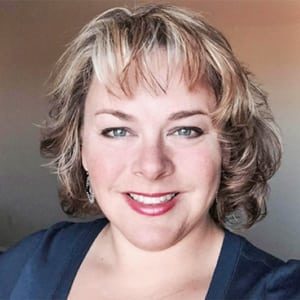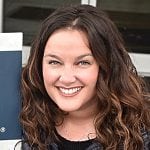
Home » Number of real estate agents in area climbs as housing inventory dwindles
Number of real estate agents in area climbs as housing inventory dwindles

February 14, 2017
In the Tri-Cities, it’s a seller’s market with homes listed in the morning having several offers that same afternoon. That’s good news for sellers, but not so good for buyers or real estate agents looking to pick up extra listings.
With more than 800 real estate agents and fewer than 500 homes on the market, local real estate experts say there’s a bit of an imbalance.
“We’ve definitely seen a significant jump and that has to do with a good economy. When business is good, you have more real estate agents who renew their license, get back in the game, and you have more people trying this as a second career,” said Steve Klaniecki, director of communications for Washington State Realtors.
“But you have to remember that about 20 percent might not be actually selling homes, they just hold the license. You have commercial real estate agents, office personnel and property managers.”

But Lola Franklin, president of the Tri-Cities Association of Realtors, says the number of real estate agents has been climbing significantly for the past two years, while the number of available homes hasn’t grown to meet that demand.
In December 2016, there were 459 residential listings compared to 991 listings in December 2014, according to Multiple Listing Service statistics. The association includes members from Benton, Franklin and Whitman counties and the lower Yakima Valley.
“The number of listings is at an all-time low and the number of members is at an all-time high. What you get is a shortage of listings for the number of people looking to list or sell them,” Franklin said.
Franklin said the association’s membership grew by 35 percent in 2015 and almost that many more last year.
“It’s a fast growing area. The economy is booming, it’s attractive to many people, and mortgages have remained relatively low,” Franklin said. “The trend is likely to continue if the Tri-Cities continues getting the positive press it’s been getting.”
The state ranks No. 39 in the ratio of real estate agents to residents with one real estate agent for every 448 residents. By comparison, a state like Arizona — with a lot of retiring snow birds — has one agent for every 168 residents.
“A lot of these new agents that are coming in don’t know it to be any different. They don’t know how it used to be before. They’re training to be successful in this new competitive market,” Franklin said. “They know the amount of work involved to make a transaction, to get the listing and to make the sale.”

There are so many brokers flooding the market that many cross over to commercial real estate without any previous knowledge on how to properly represent a client or how to negotiate a lease transaction, said Gayle Stack, designated broker, owner and commercial real estate agent at EverStar Realty in Kennewick.
Although there are fewer people buying commercial properties and days on the market are lower, she said commercial real estate sales also have seen an uptick.
“The homes are selling very fast,” Stack said. “I’ve worked in other markets and haven’t seen something like this. In Northern California and Denver, they always have an abundance of listings. The days on the market are longer than what we’re seeing here.”
The number of brokers flooding the market could also have a direct impact on the consumer — especially if they agree to work with an agent who might be trying real estate as a hobby or part-time job to supplement their income, said Cari McGee, broker at RE/MAX Professionals.
“I don’t think the question is really if there are too many agents in the Tri-Cities, I think the question is, ‘Are there too many part-time or hobbyist agents in the Tri-Cities?’ and the answer to that is, ‘Yes,’” McGee said. “If you have to wait to have your agent respond to your queries until their lunch break or after they get off work at 5 or 6, that’s not OK. If someone is doing it to pick up a few extra dollars on a part-time basis, it’s not beneficial to the consumer.”

McGee said she hasn’t felt she has needed to compete for listings since her business depends mostly on the referrals and business of loyal clients.
Stack said many new real estate agents are attracted to the field by the relatively low upfront costs of becoming a real estate agent, the job flexibility and the appeal of high reward — but it’s not as straightforward it appears.
“The business looks very appealing and easy for the average person, unfortunately. It’s very easy to get into, it’s relatively inexpensive and then it’s a matter of what happens after,” Stack said. “But it’s truly a full-time commitment. It’s getting up every day and getting to work. It’s putting in time and you get back what you put in. Sometimes you work on the weekends. You have to be super flexible.”
Sara Morales, who has been a Realtor for about five years, says that she has seen a very competitive market in the last 12 months.
“As a new agent, it would be hard coming in to the industry now. We can’t help but hear and be concerned about our low inventory numbers because there are so many of us in the area. You have to set yourself apart,” said Morales, an agent with Professional Realty Services in Kennewick. “It’s easy to be discouraged when there’s a new person getting their license here every day, some of them which do it part time.”

She works primarily with first-time homebuyers or buyers looking for their second home — which can be a problem when there’s so little inventory to choose from, especially in the $250,000 range. Many home builders have stopped building new homes below the $200,000 range.
Morales said although she has an established clientele, she still tries to set herself apart in the market — whether that’s upping the ante in marketing her services or going above and beyond for her clients.
“You have to stay on top of your game. When there’s more inventory in the market, it’s a whole different ballgame,” she said.
Vicki Monteagudo, Realtor and designated broker at Century 21 Tri-Cities, said there’s “two agents for every one listing, but I don’t see an issue with the amount of agents as much as we don’t have enough supply.”
Monteagudo said builders are trying to overcome hurdles with land acquisition and rising prices for lots.
“It’s not that they won’t build homes for under $200,000. The issue is land acquisition prices are not allowing us to build at those prices. It’s what’s driving the cost of construction and overall retail price,” Monteagudo said.
But even so, there is still a lot of interest in a real estate career, Monteagudo said. Sometimes she will interview eight to eleven agents in a two-week period, but probably only one will make the cut.

“Agents have to make a very deep commitment to their careers. They are putting in endless hours in a business that may not yield results. We focus on per agent productivity to make sure they are meeting their monthly goals. I am just as vested in their success,” Monteagudo said.
But Monteagudo said 2018 will be better: “2017 will be a light year. We don’t have enough lots coming online, but in 2018, there will be ample supply to meet demand,” she said.
Real Estate & Construction
KEYWORDS february 2017





